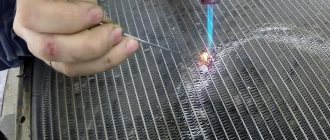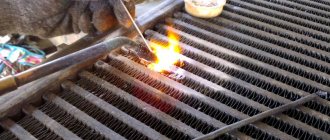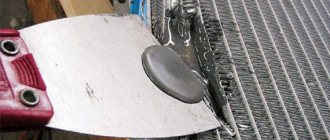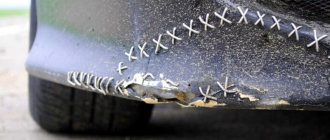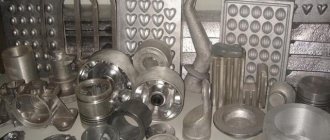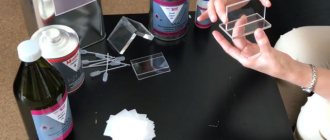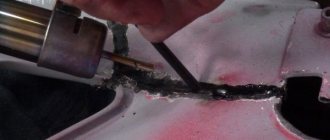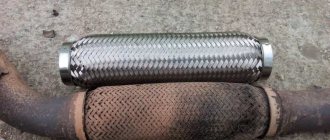It is no secret that a car radiator is one of the most important automotive parts in the vehicle engine cooling system. Its main purpose is the timely removal of heat from the internal combustion engine into the atmosphere. This occurs due to the circulation of liquid through channels, of which there are quite a lot in the car’s heat exchanger. Thus, the article describes relevant decisions for car owners on how to solder a car radiator, and what equipment should be prepared for these purposes.
- Car radiator repair methods
- How to seal a car radiator?
- Assessing the extent of radiator damage
- Internal radiator repair using chemicals
- How to solder plastic car radiator
- Surface preparation
- Preparing the adhesive mixture
- Cold welding
- Final stage
- DIY aluminum car radiator repair
- Security measures
- conclusions
Every driver should understand that the key factor for the correct functioning of the cooling system is its tightness. This means that even the smallest and most unnoticeable crack will completely disable it. Before working on soldering the part, it is important to study the process of repairing an engine cooling radiator with your own hands, and also determine which glue should be used in each specific case.
Car radiator repair methods
If you notice that your car’s radiator has become faulty, you need to take care of its speedy restoration. Otherwise, you will have to invest in more expensive engine repairs. In order to properly solder the radiator, you will need to decide on the most suitable method for this matter. The most popular methods for restoring the integrity of this spare part are:
- Soldering. Plastic housings of spare parts are always made of material resistant to high temperatures. This means that the product can be soldered with the most ordinary soldering iron. This way you can achieve a fairly long-term effect.
- Cold welding. This name refers to a special mass of plastic resins, iron and chemical additives. The cold welding method allows you to quickly cope with the restoration of a part from damage. In addition, this method makes it possible to quickly connect two surfaces and form a high-quality, durable seam between them.
- Gluing. This method is most optimal for eliminating minor damage. It is important that not every adhesive is suitable for these purposes: its characteristics must be ideal for working with heat exchanger materials.
How to find a crack or faulty radiator
When the crack is very small, you can detect the location of the antifreeze leak with a simple inspection to determine the source of the leaks. Severe damage is also easily detected by eye.
If the initial inspection fails to identify the location of the leak, experienced technicians do the following:
If the leak is very small, it is better to additionally mark it with a marker. After this, remove the rags and drain the water. All that remains is to decide on the repair method.
How to seal a car radiator?
Now let's talk about how to seal the radiator and what glue is best suited for this. Thus, one of the best options is considered to be the two-component adhesive 3M DP 8805. The basis of its composition is acrylic, which makes it possible to use the composition for working with difficult-to-glue materials:
- the main advantages of such glue are the ability to create a sufficiently strong and reliable seam that will not lose its original shape when exposed to high temperatures;
- The disadvantage is the rather high cost.
Special welding adhesives are also a good option. They are designed for quick and, most importantly, effective elimination of defects on plastic surfaces. Adhesive joints after such compositions withstand not only high but also low temperatures. In addition, they are not afraid of high atmospheric pressure.
It is important that it is not recommended to use compounds like superglue to glue parts of the radiator. Be sure to take into account that the glue for repairing a part must ideally cope with high and low temperature conditions.
To avoid making a mistake in your choice, we recommend purchasing the required adhesive from a certified automotive store.
Radiator sealants
In order not to worry on a long journey, you must always prepare for it in advance. Of course, it’s impossible to be prepared for everything, but it’s better to be prepared for a problem such as a radiator leak. Before your trip, it’s enough to purchase and put in the trunk a couple of jars of a special solution for emergency repair of leaks.
How to fix a leak in a radiator yourself
Radiator sealants can eliminate leaks within ten to fifteen minutes. But you should always look at the characteristics of the sealant; most of them cope with holes of no more than two square millimeters. While the sealant is in the coolant itself (the product is poured into the reservoir), it is also in a liquid state. And only after it is exposed to air, it quickly hardens, forming a sealed polymer-metal film at the leak site.
Important nuance! The sealant seals small cracks well, but it can also reliably clog the cooling system lines. Remember that the sealant is a temporary measure, and immediately after arriving home, you should flush the cooling system, then take the car to a car service center for real repairs.
Assessing the extent of radiator damage
It is customary to install the radiator itself in the engine compartment, or rather in its front part. This is how it is possible to create the effect of blowing with a counter flow of air while the vehicle is moving. The disadvantage of a car heat exchanger is its fragility. This device is often called the most vulnerable part of any car.
Even if the slightest impact occurs, the likelihood of mechanical damage to the spare part in question is quite high. Heat exchangers whose water tanks are made of plastic break down especially often. Therefore, when deciding how to repair a radiator, you need to focus primarily on your capabilities. Carefully study all the methods presented above and try to figure out which method will be the most convenient and simplest from a practical point of view.
It is also important to first assess the extent of the damage. If it is strong enough, it is recommended to focus on direct adhesion. This way you can deal with really large cracks that cannot be fixed with ordinary glue. If the crack is not the largest, cold welding type putty is quite suitable. Glue will be the optimal solution for restoring small cracks.
If you are not sure that you know how to seal a car’s cooling system, it is better to focus on repairing the system at a car service center. In addition, you won’t have to spend too much money on restoration work carried out by a mechanic, because the process itself is not considered difficult.
Solving broader problems
Radiator or pipe leaks cannot always be eliminated using simple, accessible methods. In some cases, this will require the use of specialized cold welding.
This is a special substance that, in fact, works like a very reliable glue. Metallic substances are additionally introduced into its composition, which are an excellent binding material.
Today on the market you can find both cold welding, produced in the form of powders, and a ready-made version. Of course, on the road it is better to have an option ready so that you can immediately use it for its intended purpose.
Internal radiator repair using chemicals
Radiator repair can also be done using traditional methods. So, when all sorts of chemicals simply had not yet been invented, ordinary mustard was considered the most effective way to deal with a broken car heat exchanger. It was simply poured into the car radiator. Since hot water circulates there, the mustard swells quickly enough and covers all the small cracks in the pipes.
So, at any time you can purchase chemicals that act on approximately the same principle. They are often sold under the names "powdered remanufacturer", "repair agents" or "radiator sealants".
The main disadvantage of using such chemicals is that it is unlikely to know their exact composition or the exact place of production. Just like with regular mustard, the use of some types of such chemicals can lead to clogging of the heat exchanger. Moreover, sometimes these substances can damage the entire cooling system of the engine.
The simplest ways
First, it’s worth deciding on the scale of the tragedy.
. It is necessary to check all the pipes and the radiator itself in order to draw any conclusions. If the leak is minor, then one magical remedy called a chicken egg can help get rid of it for a while. Yes, yes, this is what saves many on the road. All you need to do is go to the nearest grocery store and buy this miracle product.
The chicken egg must be broken and its contents poured into the radiator. The leak will disappear in an incredible way. In fact, there is no magic in this. Everything is connected with the structure of the egg, which envelops the walls of the cooling radiator. This method is suitable if trouble happens on the way, but you cannot fully rely on this method.
Another simple way is to use sealant
. Of course, we are talking about a specialized version for cars. Here it is also worth talking about minor leaks, the diameter of which does not exceed 1-2 square mm. All you need to do is pour the contents of the jar into the radiator. the substance in it will clog the hole for a long time.
However, do not delude yourself, because such sealants often have a negative effect on the car. Over time, they can simply clog the cooling system. This is unacceptable, therefore, after using them, it is imperative to use various methods of cleaning the radiator in order to completely remove the substance from it.
How to solder plastic car radiator
Soldering an engine cooling radiator is considered a fairly simple task. However, not everyone can cope with it due to insufficient knowledge of how to solder a car radiator on their own. Most car owners prefer to take their car to a service station.
If you are confident in your abilities, then first you should determine how to seal the plastic radiator. Next, let's look at step-by-step instructions that will help you make a truly high-quality and durable repair of the plastic parts of the part.
Surface preparation
Before gluing the plastic on the car radiator, you will need to thoroughly prepare the surface for this process. For this purpose, we will need to clean it from grease, dust and dirt. Lightly dampen a rag and very carefully wipe the areas of plastic around the resulting crack.
In order to achieve a better effect, it is recommended to use an alcohol solution. It is important that in no case should you overdo it. The fact is that too active mechanical impact on the damaged area or excessive pressure on it when cleaning can damage the heat exchanger even more.
Preparing the adhesive mixture
Now you need to worry about how to seal the crack on the car radiator. So, let's prepare the adhesive mixture. If you decide to use exclusively glue specially designed for such purposes, then its use will be as simple as possible.
A small amount of adhesive should be applied directly to the damaged area. When a part is missing a certain piece of the body or there is no gap between the two halves that are formed due to a crack, it is recommended to sprinkle the liquid base with the powder component of the glue.
So, if the crack itself is too deep or a sufficiently large part of the body is missing, gluing must be performed in several stages. You should apply glue to the damaged area two or three times, waiting until each layer is almost completely dry. When the resulting gap can be completely filled with dry gradulant, it is recommended to saturate it with a liquid composition. This way you can be completely confident that it will adhere perfectly to the surface of the spare part.
Cold welding
In addition, you can seal a car radiator using cold welding. Since it comes in the form of a fairly thick putty, it will be enough to apply it to the seam and wait until it cools completely. It is important that this putty must be applied in a neat and even layer so that the seam is of the highest quality.
Cold welding must be used as:
- the main method of restoring performance;
- an additional means of securing the result obtained by soldering or gluing.
A layer of cold welding applied on top of the glue layer will allow you to preserve the quality of the auto part repair for a long time and extend the service life of the part.
Final stage
When the glue has completely hardened and all the main working steps have been completed, you need to carry out final surface treatment. It is necessary to ensure that the resulting seam becomes neat and smooth. For such purposes, the soldering area will need to be treated with fine-grained sandpaper, and ideally with a grinding machine.
In this way, you will be able to get rid of all minor defects that will not have the best effect on the further operation of the product. After this treatment has been completed, install the heat exchanger back in its place.
Cold welding for radiator
If the crack in the radiator exceeds the maximum that can be repaired with a liquid sealant, then you can use another means - a heat-resistant adhesive sealant or cold welding (the composition of such glue has metal powder). Such products are sold in car dealerships in ready-made paste form or in the form of two components that must be mixed before use.
Quick-drying putties contain titanium and steel powder fillers; they set within a few minutes and reach final hardening in fifteen. Such a patch can be subjected to mechanical stress within an hour. Such sealants glue metal, rubber and plastic, as well as glass. As the glue hardens, it expands, giving a cork effect, which helps with fairly large cracks. This plasticine is applied around the damage, having previously cleaned and degreased the area. Cold welding holds up well, and the same coefficient of expansion when heated makes this a reusable patch that can last for several months or longer.
How to find a leak in a radiator
DIY aluminum car radiator repair
Let's look at how to solder an aluminum car radiator at home. Typically, aluminum devices are repaired according to a special principle. So, you will definitely have to solder the damaged area.
First of all, you will need to remove the radiator and drain all remaining fluid from it. The tanks are washed under running water and dried until not a drop of water remains inside. In addition, you need to assess the condition of the tank as carefully as possible. Find even the smallest cracks and flaws in it. So, to do this, take a large basin of water or a bathtub, prepare a pump or compressor. Close the cover fitting in exactly the same way as the cooling system pipes, and connect one of them to the pump tube. Place the device in the bathroom and supply air. Watch for the bubbles that appear from the cracks.
It is not possible to repair an aluminum car radiator with an ordinary soldering iron. You need a fairly powerful device, which is unlikely to be found in everyday life. So, you will need a device whose power is approximately 250 watts. The aluminum itself will need to be preheated, for which you need to use a special gas burner.
It is important that this process requires strict adherence to basic security measures. Use of this equipment other than in accordance with the instructions may result in serious injury.
Argon arc technology
Welding of aluminum radiators is carried out with a non-consumable electrode in an argon atmosphere using an aluminum filler rod. This technology is traditionally widely used for welding aluminum products.
Aluminum is prone to the rapid formation of an oxide layer on the surface, which prevents the creation of a complete weld. In addition, the presence of oxygen causes metal spattering, which interferes with the formation of a weld pool.
These problems are most successfully solved by using welding in a protective argon environment.
Welding of copper radiators is also carried out in argon, but with the use of an appropriate copper additive.
It should be noted that, despite the limited use, welding is the most reliable way to repair damaged car radiators.
Connections created by welding are not inferior in strength and service life to those made at the factory during the manufacturing process of the part.
When choosing a repair technology, if possible, you should always give preference to welding the radiator with argon.
Security measures
When repairing a car radiator, you should be extremely careful and follow certain safety measures. The heat exchanger itself must be disconnected. Drain all liquid completely.
If you have not previously had experience working with a soldering iron, it is better to entrust this task to professionals. In this case, you should at least practice on less important surfaces and parts of the car.
When working with cold welding or glue, it is important to use gloves to avoid damaging your hands. In addition, be sure to follow the instructions for using the glue. This way you can not only achieve the ideal effect of the repair, but also protect your hands from the harmful effects of adhesives.
conclusions
So, following the recommendations and advice in the article, determining what to seal a car radiator with will not be difficult. The main thing is to follow some safety measures and choose the best repair option. If you are not sure that you can cope with such a task on your own, it is better not to take risks and seek help from qualified auto mechanics.
Still have any questions? In this case, we recommend watching a video on how to repair a car radiator at home. We wish you good luck in your endeavor!
Use of iron rosin flux
There is a simple way to solder a radiator with a soldering iron using rosin-based flux. To do this, the damaged metal is prepared according to the following scheme:
- remove paint residues and all kinds of dirt;
- thoroughly clean the metal with an abrasive;
- degreased with a special solvent.
The preparation must be very conscientious; the entire repair depends on this. Flux is prepared in a metal crucible. Melt the rosin and gradually add iron filings there in a ratio of 1:2. Stir until smooth. Sawdust in this case will be an abrasive.
Next, the surface to be repaired is covered with a thin film of molten flux. The quality of future soldering depends on the thoroughness of the procedure. In this way, aluminum is protected from oxidation.
The materials used in the work emit toxins. Therefore, you need to do everything under a hood, or carry out repairs in a thoroughly ventilated area. If conditions permit, outdoors.
Next, the soldering process begins. Use a soldering iron to grab a little solder and apply it on top of the flux using smooth circular movements. This should be done slowly, carefully ensuring that the solder is evenly distributed over the damaged area.
How does flux behave in this case? Iron filings clean off oxides, and rosin blocks air access to aluminum. The conditions for contact between metals are met.
This method works when you need to solve the problem of how to solder an aluminum radiator if the damage is not great. Large areas cannot be repaired this way. The flux becomes cold very quickly, so soldering a large surface will be problematic.
